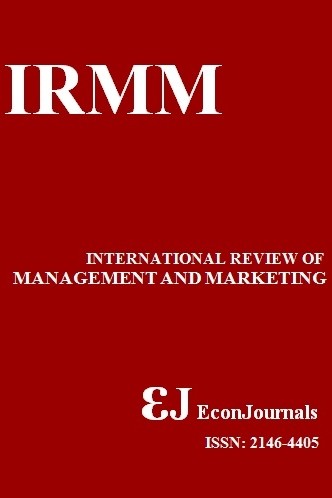Changes in the Social Structure of the Kalmyk Society in the Late 19th and Early 20th Century
Changes in the Social Structure of the Kalmyk Society in the Late 19th and Early 20th Century
Kalmyks, social structure, nobility, commoners hired labour, market, seasonal work,
- Başlangıç: 2011
- Yayıncı: İlhan ÖZTÜRK
Management of the Psycho-Pedagogical Work on Prevention of Antisocial Behavior of Troubled Teenagers
Nina M. STUKALENKO, Madina B. ZHANTEMİROVA, Aizhanа B. ABİBULAYEVA, Zhadyra K. ERMEKOVA, Sadybek K. BEİSENBAYEV
Svetlana Sergeevna Nosova, Rafael Envarovich Abdulov, Yulia Mihailovna Medvedeva
Student's Sport as Indicator of Cultural Development of Society
Nelya Alekseevna Korbukova, Evgenia Gennadyevna Podkopayeva, Svetlana Nikolaevna Lоktionova, Natalya Pavlovna Soltan, Irina Anatolyevna Budnikova
Methodological Paradigm of Social Interaction as the Basis for Modern Education Resources Research
Anna Iosifovna Sherbakova, Alexander Vladlenovich Kamenetz, Natalya Ivanovna Anufrieva, Evgeniy Aleksandrovich Anufriev, Elizaveta Olegovna Zinchenko
Advanced Education in the Information Society
Vladimir Nikolaevich KNYAGİNİN, Nikolay Alekseevich MESHKOV, Konstantin Vladimirovich UTOLİN
Nina Mikhaylovna Stukalenko, Saule Ashotovna Murzina, Boris Vasilyevich Kramarenko, Zhаdyra Kerimbaevna Ermekova, Gulmira Madievna Rakisheva
The Study of Teachers’ Activity in Vocational Education as a Scientific Problem
Natalia Mikhaylovna ALEKSANDROVA, Polina Vadimovna GUSEVA
The Main Trends for Arranging Project Activities in Practice of the Modern Elementary School
Zinaida Petrovna LARSKİKH, İrina Gennadievna ALMAZOVA, Svetlana Nikolaevna CHİSLOVA, Valentine Alexandrovna Chibuhashvili
Pedagogical System Approach to Search, Development and Support of Gifted and Talented Students
Ambartsum Robertovich GALUSTOV, Vladimir Stepanovich GLUKHOV, Robert Ambartsumovich GALUSTOV
Victor A. BULAEV, Elena V. KOVERKİNA, Marina V. SOSHENKO, Viktor İ. SHMYREV, Denis V. SHMYREV
